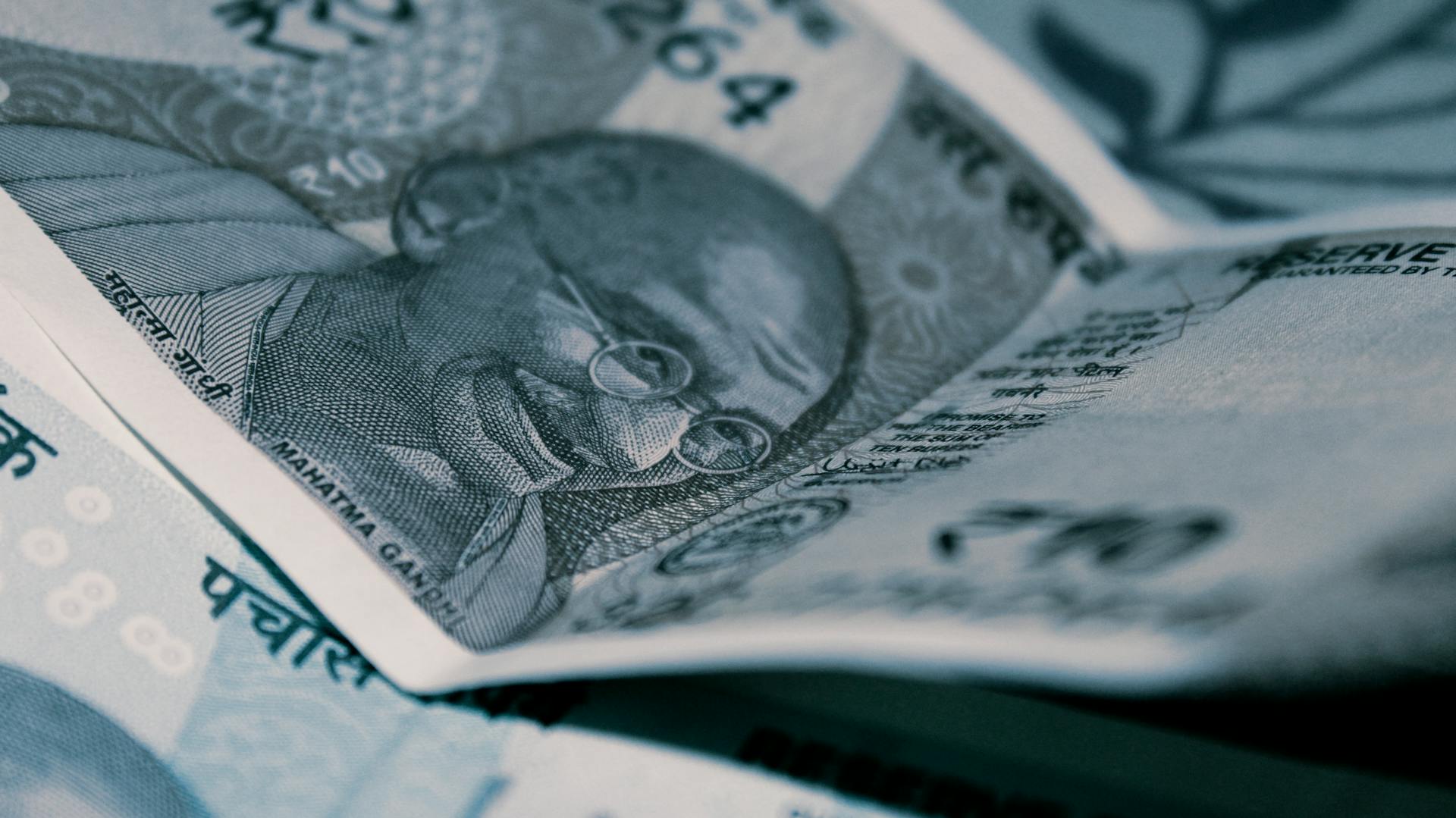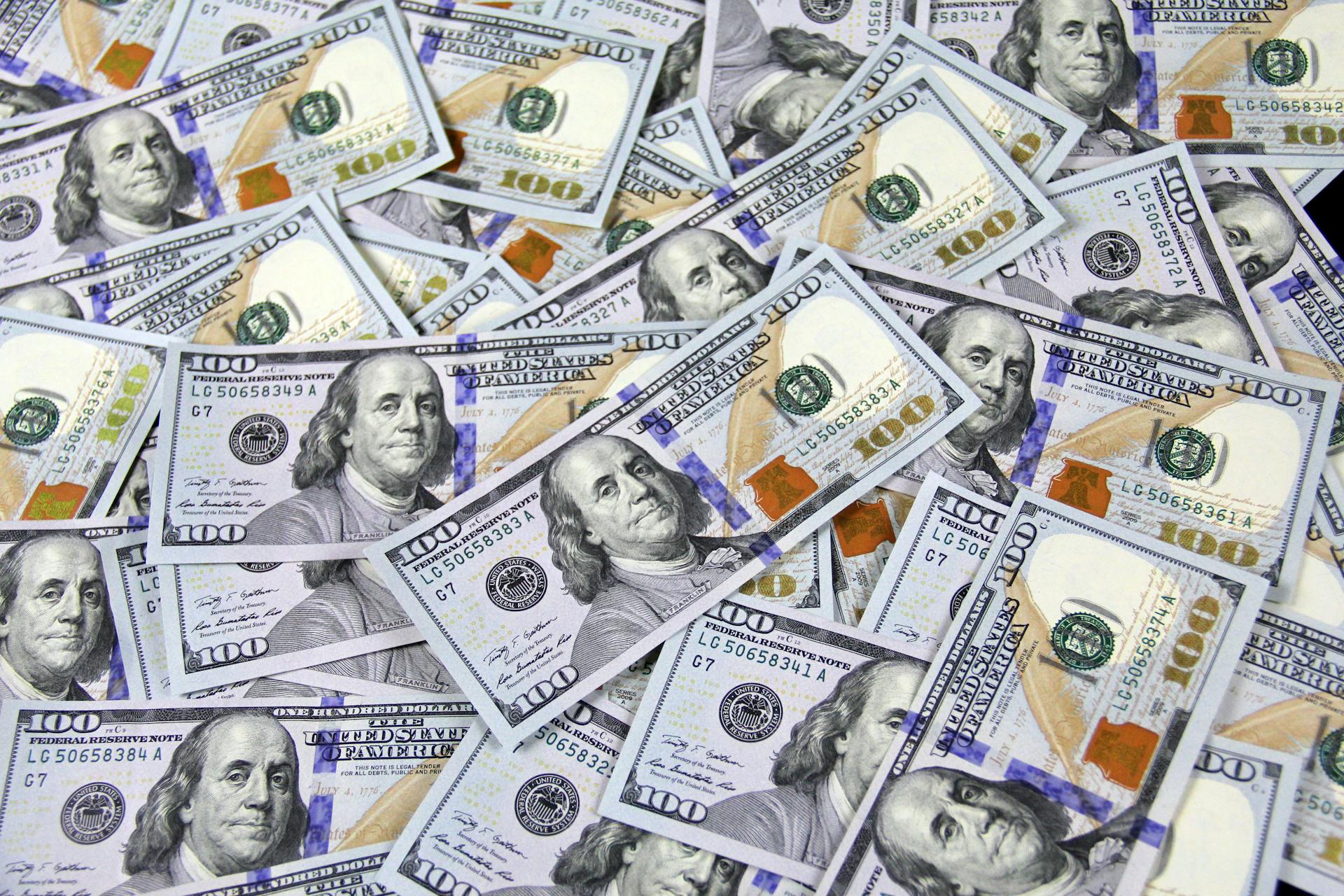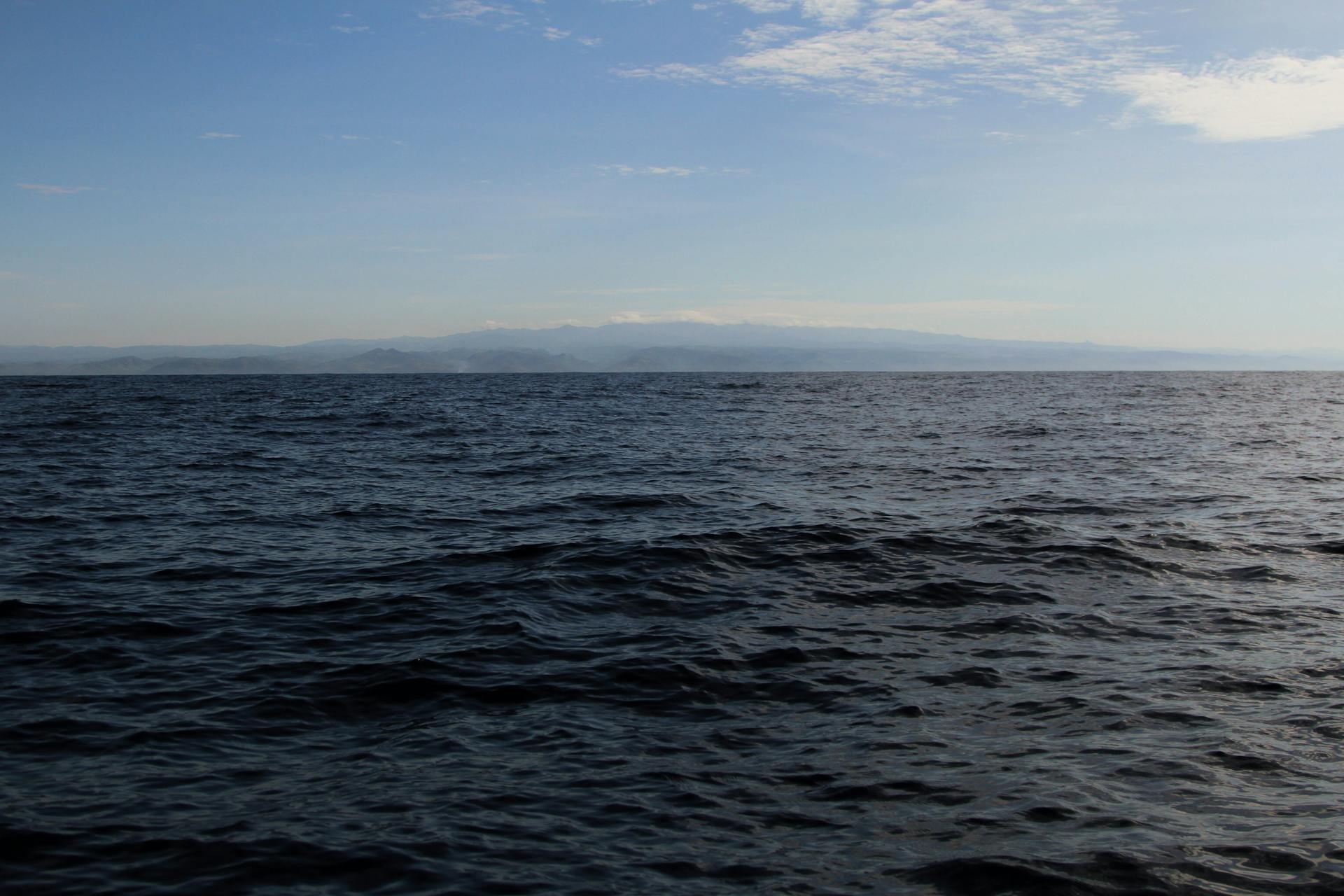
El Salvador has a long history of using various currencies. The US dollar has been the official currency of El Salvador since 2001.
The US dollar was adopted after the country's civil war, which led to a severe economic crisis. This decision was made to stabilize the economy and attract foreign investment.
El Salvador is one of the few countries in the world that uses the US dollar as its official currency. This has made it easier for tourists and businesses to conduct transactions.
As a result, you won't need to exchange your money for a different currency when visiting El Salvador. You can use your US dollars freely in the country.
Alternative Currencies
El Salvador has a unique approach to currency, with three legal currencies in use as of 2021. Only two of them can be used, the US dollar and Bitcoin.
The US dollar remains the primary currency in El Salvador, and it's not mandatory to pay in Bitcoin. Nayib Bukele, the country's leader, expressed that the US dollar will continue to be the currency of El Salvador.
A different take: El Salvador Currencies Bitcoin
Currency Forms
In El Salvador, the Central Reserve Bank of El Salvador put into circulation the first uniform family of banknotes on August 31, 1934. The family consisted of six denominations: 1, 2, 5, 10, 25, and 100 colones.
The Central Reserve Bank later authorized the addition of 50-colón banknotes on May 3, 1979, and 200-colón banknotes on April 18, 1997. The last two-colón banknotes were authorized on June 24, 1976, followed by the one-colón banknote on June 3, 1982.
Here's a list of Salvadoran banknotes and their corresponding values, main colors, and descriptions:
| Value | Main Color | Description |
|---|---|---|
| ₡ 1 (US$0.11) | Red | Christopher Columbus, Presa 5 de Noviembre |
| ₡ 2 (US$0.23) | Magenta | Christopher Columbus, Colonial church in Panchimalco |
| ₡ 5 (US$0.57) | Green | Christopher Columbus, Palacio Nacional |
| ₡ 10 (US$1.14) | Blue | Christopher Columbus, Volcán de Izalco (Izalco volcano) |
| ₡ 25 (US$2.86) | Cyan | Christopher Columbus, Pirámide de San Andres |
| ₡ 50 (US$5.71) | Purple | Christopher Columbus, Lago de Coatepeque |
| ₡ 100 (US$11.43) | Olive Green | Christopher Columbus, Pirámide del Tazumal |
| ₡ 200 (US$22.86) | Brown | Christopher Columbus, Monumento al Divino Salvador del Mundo (Monument to the Divine Savior of the World) |
US Dollar - Principal Currency
The US dollar has been the principal currency of El Salvador since 2001. It's been the go-to currency for transactions and daily use.
In 2001, the Law of Monetary Integration allowed the US dollar to circulate alongside the Salvadoran Peso. This law effectively made the dollar the primary currency.
The US dollar became the only currency in circulation after the banks exchanged Salvadoran Pesos for dollars. This change was a result of the Law of Monetary Integration.
As of 2021, the US dollar remains the principal currency of El Salvador.
Curious to learn more? Check out: South African Monetary Unit
Banknotes
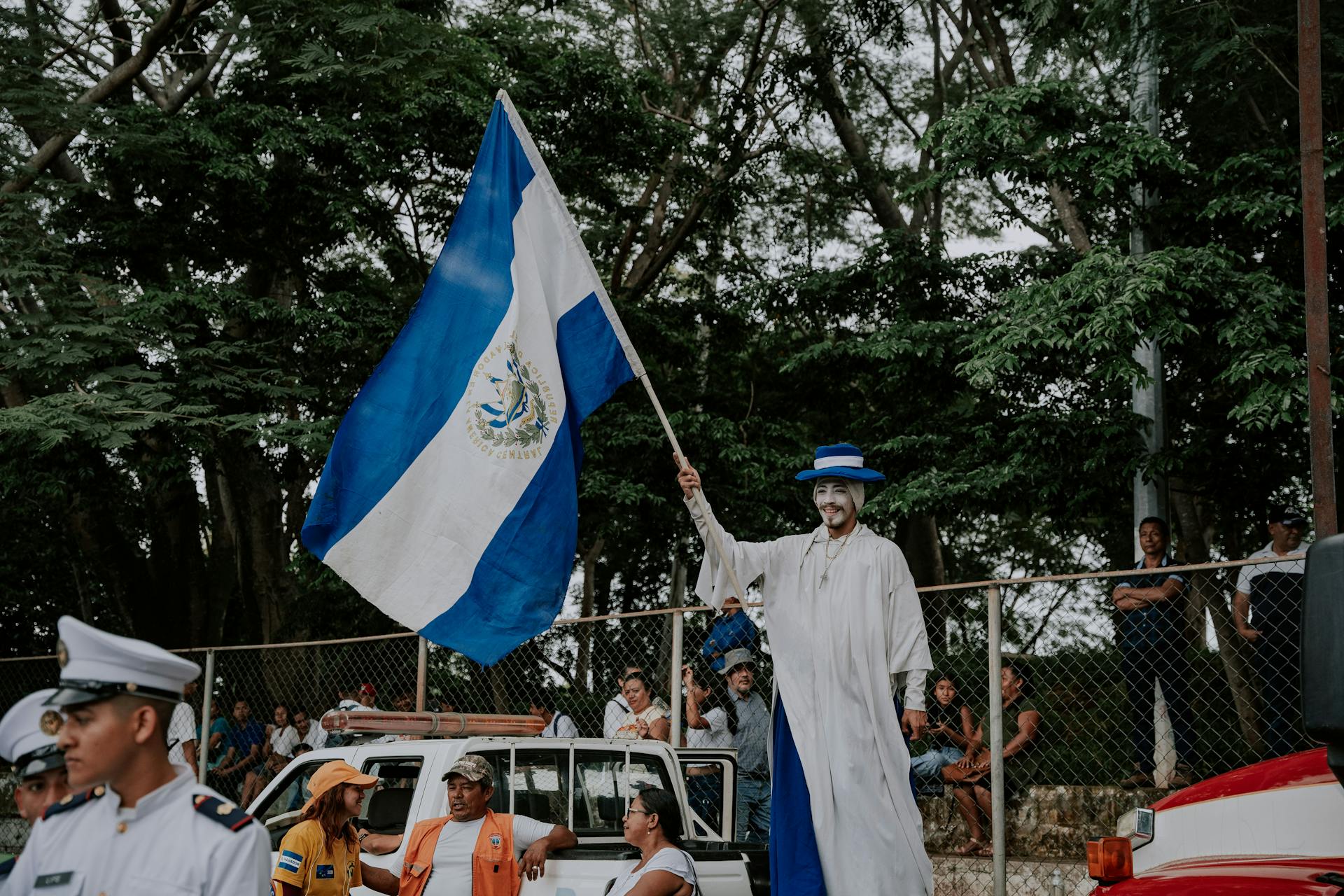
The Salvadoran colón has a fascinating history when it comes to banknotes. The Central Reserve Bank of El Salvador introduced the first uniform family of banknotes on August 31, 1934.
These banknotes replaced those issued by other banks and consisted of six denominations: 1, 2, 5, 10, 25, and 100 colones. The Central Reserve Bank later authorized additional denominations, including the 50-colón banknote in 1979 and the 200-colón banknote in 1997.
One notable feature of Salvadoran banknotes is the validation overprint on the reverse side. This practice originated from the government's supervision of commercial banknotes and continued until 2001, when the Superintendency of the Central Reserve Bank was responsible for validation. The validation overprints were discontinued with the latest series of colón banknotes in 1997.
Here's a breakdown of the different denominations of Salvadoran colón banknotes, along with their values and main colors:
| Value | Main Color | Description |
|---|---|---|
| ₡ 1 (US$0.11) | Red | Christopher Columbus and Presa 5 de Noviembre |
| ₡ 2 (US$0.23) | Magenta | Christopher Columbus and Colonial church in Panchimalco |
| ₡ 5 (US$0.57) | Green | Christopher Columbus and Palacio Nacional |
| ₡ 10 (US$1.14) | Blue | Christopher Columbus and Volcán de Izalco (Izalco volcano) |
| ₡ 25 (US$2.86) | Cyan | Christopher Columbus and Pirámide de San Andres |
| ₡ 50 (US$5.71) | Purple | Christopher Columbus and Lago de Coatepeque |
| ₡ 100 (US$11.43) | Olive Green | Christopher Columbus and Pirámide del Tazumal |
| ₡ 200 (US$22.86) | Brown | Christopher Columbus and Monumento al Divino Salvador del Mundo (Monument to the Divine Savior of the World) |
Coins
The colón replaced the peso at par, so 1 and 5 centavos coins issued before 1919 continued to be used without any design changes.
Here's an interesting read: Series B Banknotes
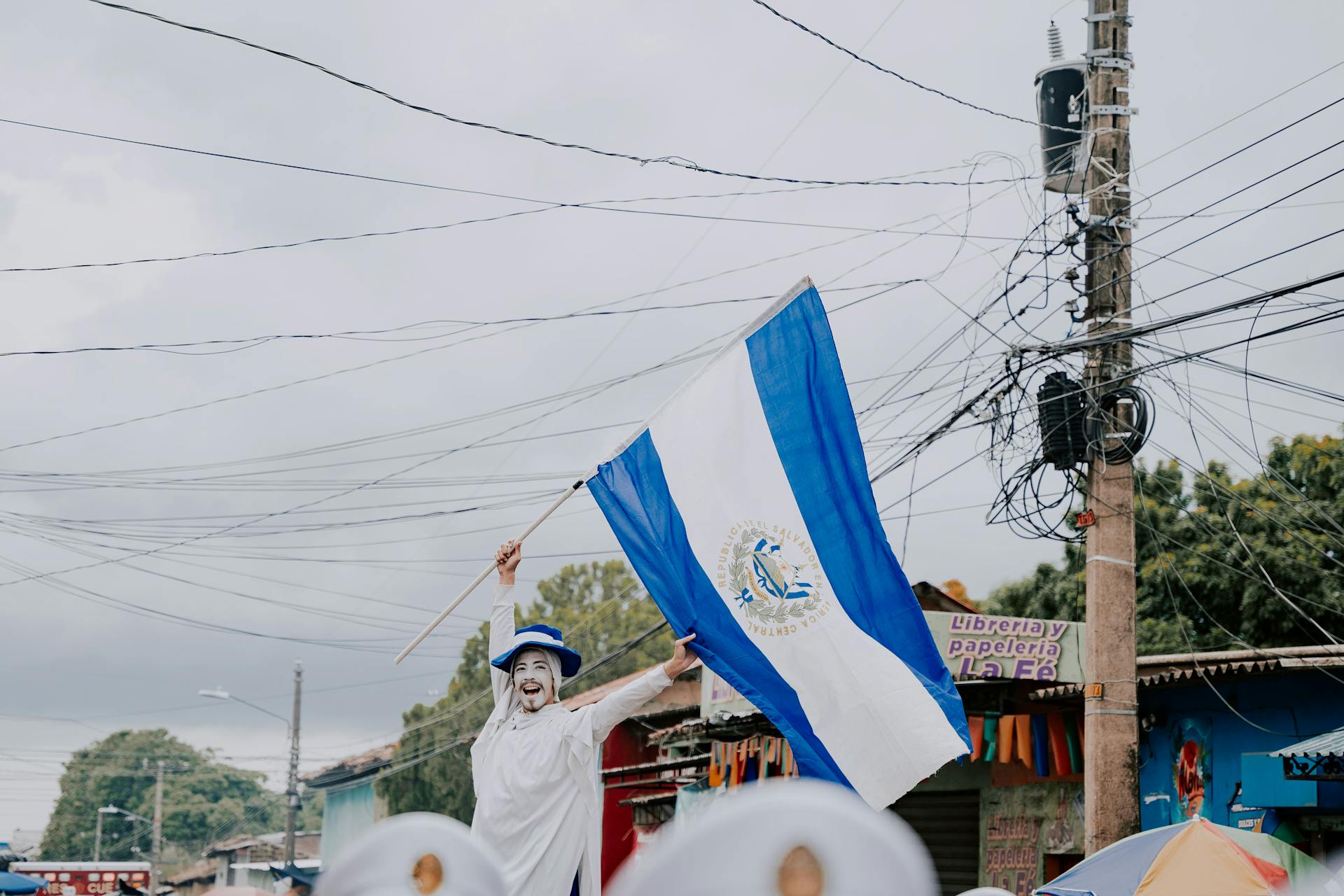
Coins were introduced in various denominations over the years, with cupro-nickel 10 centavos being introduced in 1921.
In 1943, silver 25 centavos were introduced, and in 1953, silver 50 centavos were introduced alongside smaller silver 25 centavos.
Both the silver 50 centavos and smaller silver 25 centavos were replaced by nickel coins in 1970.
The introduction of nickel-brass 2 and 3 centavos coins in 1974 marked a significant change in the country's coinage.
In 1984, 1 colón coins were introduced to further simplify the currency.
Intriguing read: 50 Krooni
Currency Symbol
The symbol for the colón is a c with two slashes, represented by the Unicode code point U+20A1 or the decimal representation 8353.
Locals often use the cent sign '¢' to designate the colón in price markings and advertisements.
You can enter the colón sign in HTML as ₡.
The colón sign is not to be confused with the cent sign (¢) or the cedi sign ₵.
Consider reading: 10 Euro Cent Coin
Historical Context
El Salvador has a rich history of currency, dating back to the Spanish colonial era. The country's first currency was the Spanish peso, which was introduced in 1830.
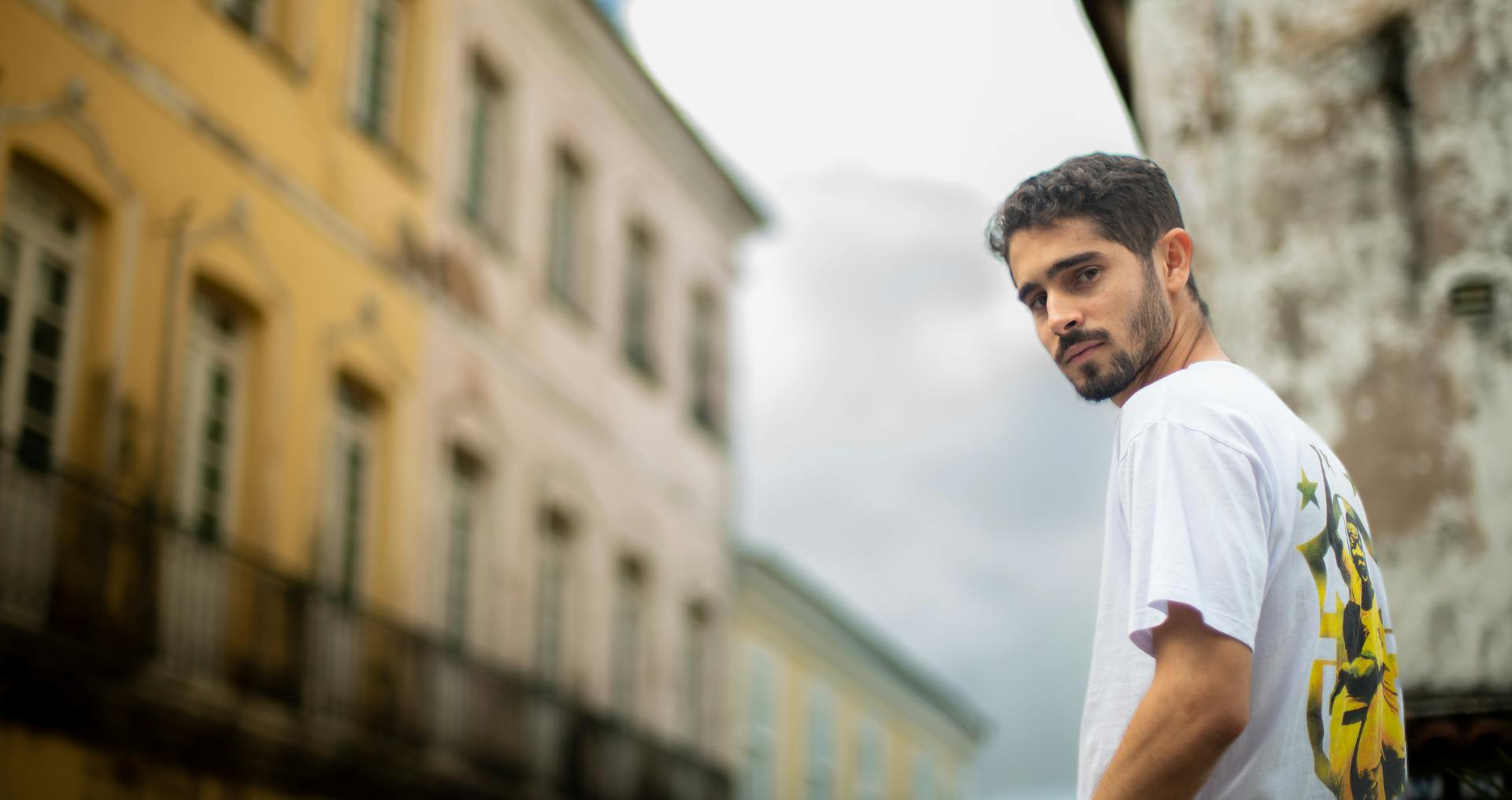
In the late 19th century, El Salvador introduced its own currency, the Salvadoran peso, which replaced the Spanish peso. The new currency was pegged to the US dollar.
The country's economy was heavily influenced by the US, which led to the adoption of the US dollar as a secondary currency in 2001. The US dollar was used alongside the Salvadoran peso until 2001.
The Central American Monetary Council, established in 1990, aimed to promote economic integration among Central American countries, including El Salvador.
Discover more: History of Central Bank Digital Currencies by Country
p.article.sections.frequentlyAskedQuestions
How much is $1 in El Salvador?
One US Dollar is equivalent to 8.7802 El Salvador Colon. You can exchange your dollars for colones at the current exchange rate.
p.article.sections.sources
- https://insights.som.yale.edu/insights/el-salvador-adopted-bitcoin-as-an-official-currency-salvadorans-mostly-shrugged
- https://www.travelcurrencies.com/el-salvador/
- https://www.investing.com/currencies/usd-svc
- https://elsalvadorinfo.net/legal-currency-of-el-salvador/
- https://en.wikipedia.org/wiki/Salvadoran_col%C3%B3n
p.article.featuredImages pexels.com

